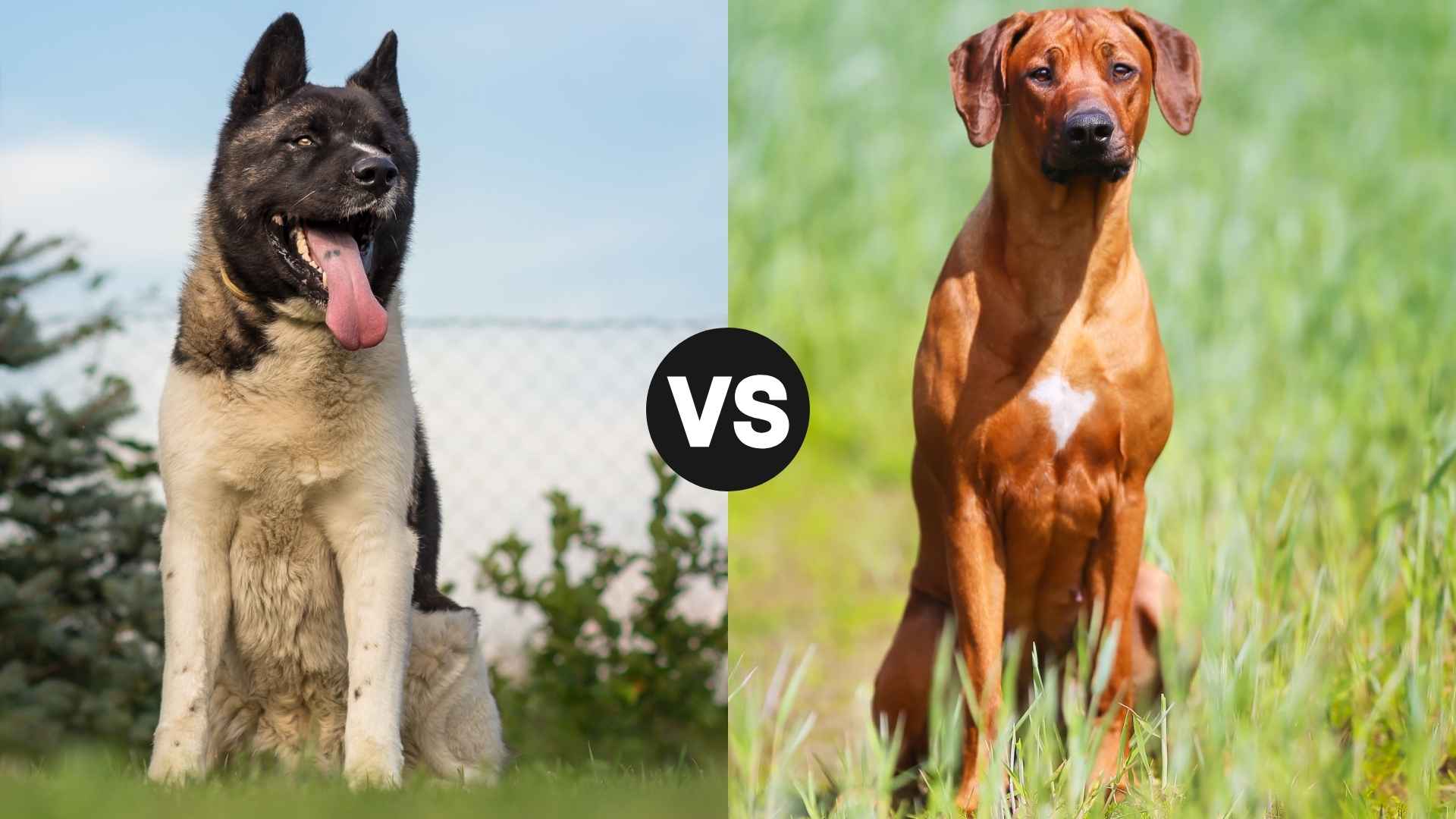Some dogs you walk with. Others walk into your life and change it forever. The Akita and the Rhodesian Ridgeback are exactly that kind of dog. Not your usual fetch-and-snuggle types. These dogs are bold, deep, and built with purpose.
You don’t own them—you earn them. One will stand still, watching your back in silence. The other will chase the wind and drag you into the wild.
Both are stunning. Both demand respect. And both leave a lasting mark on anyone who’s lived with them. You don’t choose a breed like this by looks or labels. You choose by feel. By fit. By fire.
So if you’re torn between a quiet guardian and a fearless runner, don’t worry. You’re not alone. We’re about to walk you through everything—clearly, simply, and side by side. But first, let’s understand who these two legends really are.
Akita vs. Rhodesian Ridgeback
Size and Weight Overview
Akita: Broad and imposing build
The Akita stands tall with a dense frame and heavy bone structure, built for strength and endurance. The average male weighs between 100–130 pounds, while the female typically ranges from 70–100 pounds. Despite their size, they move with control and surprising agility.
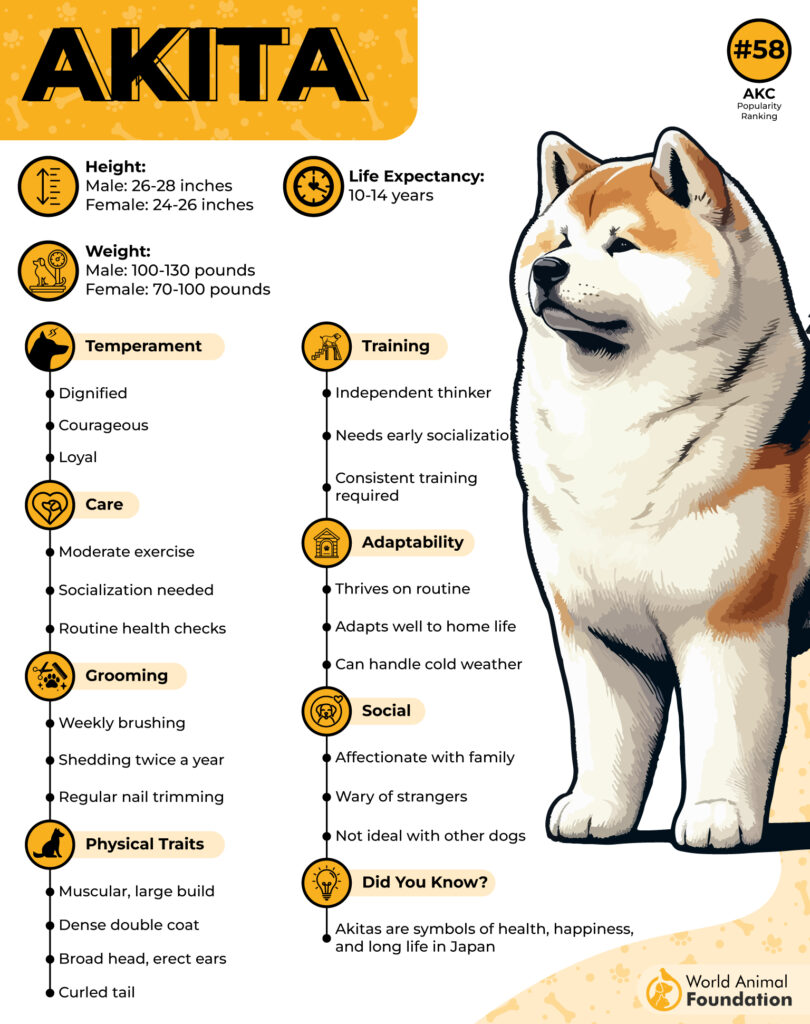
Rhodesian Ridgeback: Lean yet muscular
Ridgebacks are slightly taller but not as bulky, with a sleek and athletic outline. The average male weighs around 85 pounds, and females typically fall between 65–75 pounds. Their body reflects a blend of speed, stamina, and balance.
Height comparison reveals subtle differences
An average Akita stands 26–28 inches tall at the shoulder, depending on gender. Ridgebacks are usually 24–27 inches, with a leaner silhouette and less body mass. The difference in build creates a notable contrast in presence and movement.
Purpose shapes their physical traits
Akitas were bred for strength and protection in cold climates, influencing their stocky appearance. Ridgebacks originated as hunting dogs in southern Africa, which explains their lighter frame. Each breed’s body reflects its original role and function.
Personality and Temperament Traits
Akita: Reserved but deeply loyal
Akitas are known for their calm, confident demeanor and intense devotion to their family. They’re not naturally outgoing and tend to be aloof with strangers. Around their people, however, they’re incredibly gentle and protective.
Protective instincts run deep
Akitas don’t typically mix well with unfamiliar pets or animals unless socialized early, as mentioned in PDSA. They’re highly territorial and often prefer being the only dog in the house. Consistent training is crucial to balance their strong-willed nature.
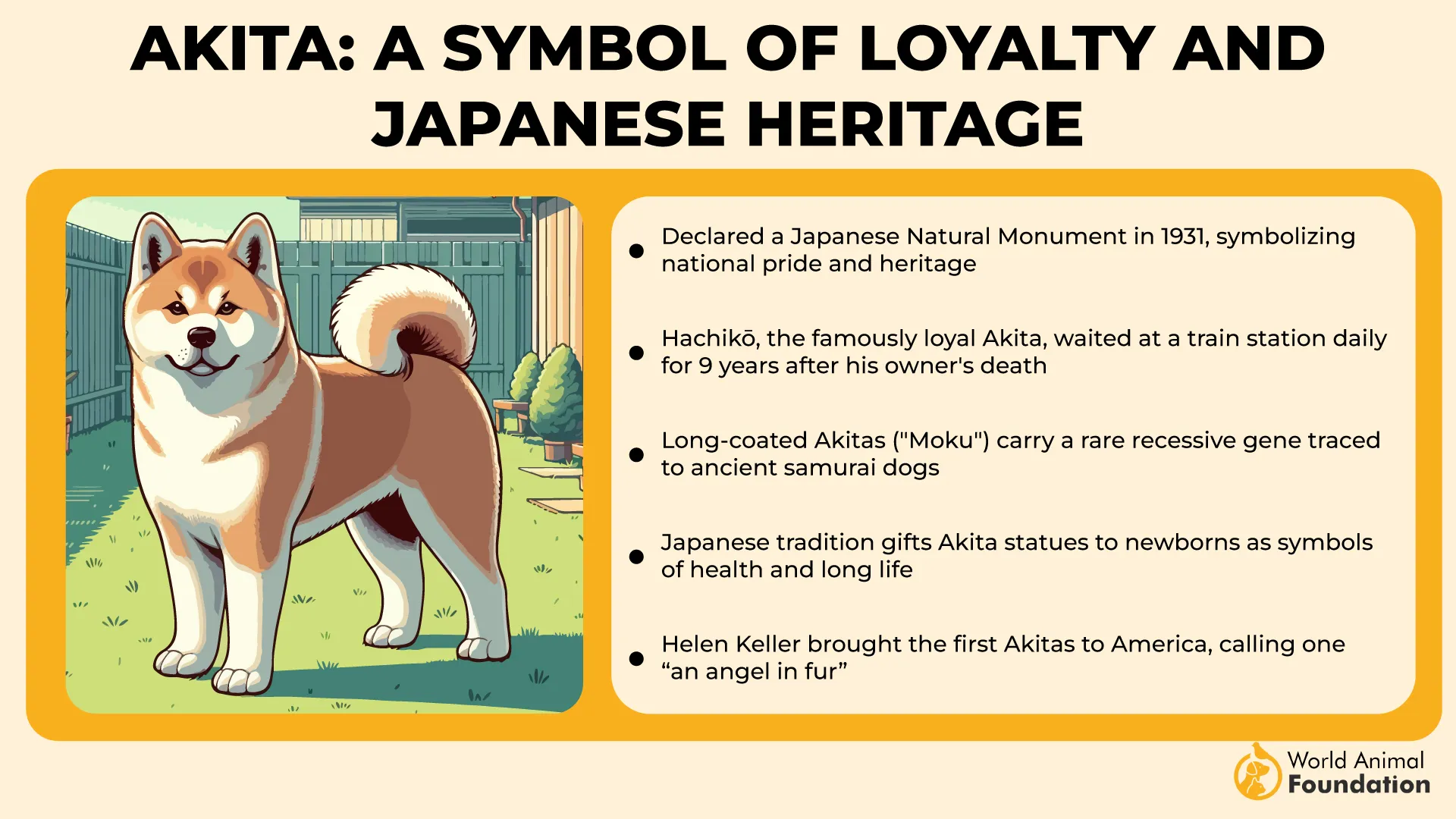
Rhodesian Ridgeback: Independent but affectionate
Ridgebacks are intelligent, alert, and carry a quiet confidence. While they enjoy affection, they don’t constantly seek attention and value their independence. Early training helps shape their behavior, especially when they’re still puppies.
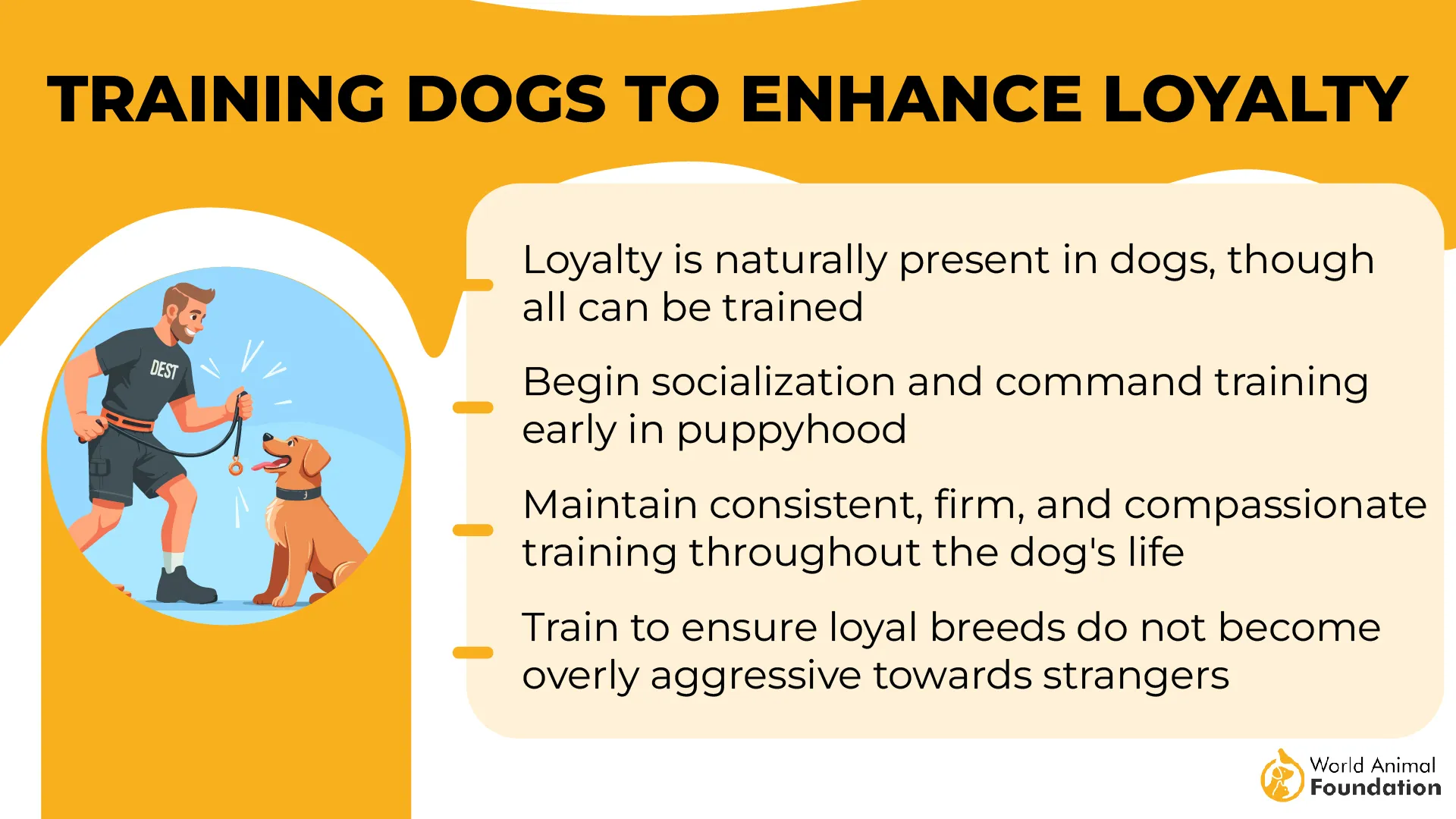
Balanced but needs the right match
Ridgebacks usually do better with other pets than Akitas, though supervision is still important, as recommended by Showsight Magazine. They can be great with kids when raised together and taught boundaries. Their gentle temperament makes them steady, but they require structure to thrive.
Trainability and Cognitive Abilities
Akita: Intelligent but strong-willed
Akitas are known for their sharp memory and independent decision-making, often processing situations before reacting. They respond best to firm, consistent training with clear structure and minimal repetition. Teaching new commands requires patience and confidence from experienced owners.
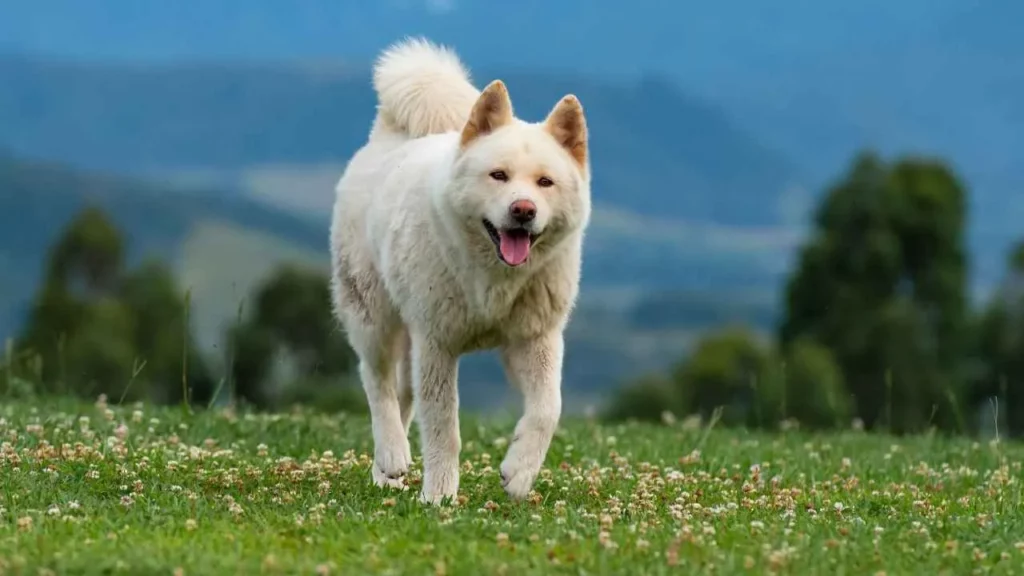
Ridgeback: Quick learner with a stubborn streak
Rhodesian Ridgebacks are intelligent and observant, often picking up patterns faster than expected. However, their independent thinking can lead to selective listening during sessions. Structured routines help them stay focused, especially when paired with walking breaks to release excess energy.
Motivation differs between the two breeds
Akitas respond more to relationship-based rewards than food or toys, making bonding a key part of success. Ridgebacks are more playful during training and often engage better through short, interactive drills. Knowing what motivates each breed is crucial for long-term progress.
Mental stimulation is essential for both
Without variety and challenge, both breeds can lose interest or become resistant. Akitas enjoy mentally engaging tasks that mirror protective roles, while Ridgebacks shine in active games with a goal to win. Training plans should align with their breed-specific intelligence.
Bite Force and Jaw Characteristics
Akita: Heavy-set jaws with a serious grip
The Akita has an exceptionally strong bite, with an estimated force of around 350–400 PSI, as highlighted in Dogell. This power is supported by a broad skull and deep-set jaws designed to hold and control. Their mouth structure is compact but built for sheer force, not speed.
Rhodesian Ridgeback: Precision over pressure
Ridgebacks don’t have the same raw bite pressure, usually measuring between 200-300 PSI, as per Ridgeback Life. Their jaw structure is leaner, shaped for catching and holding prey during long pursuits. While not the most powerful among dog breeds, their control and accuracy stand out.
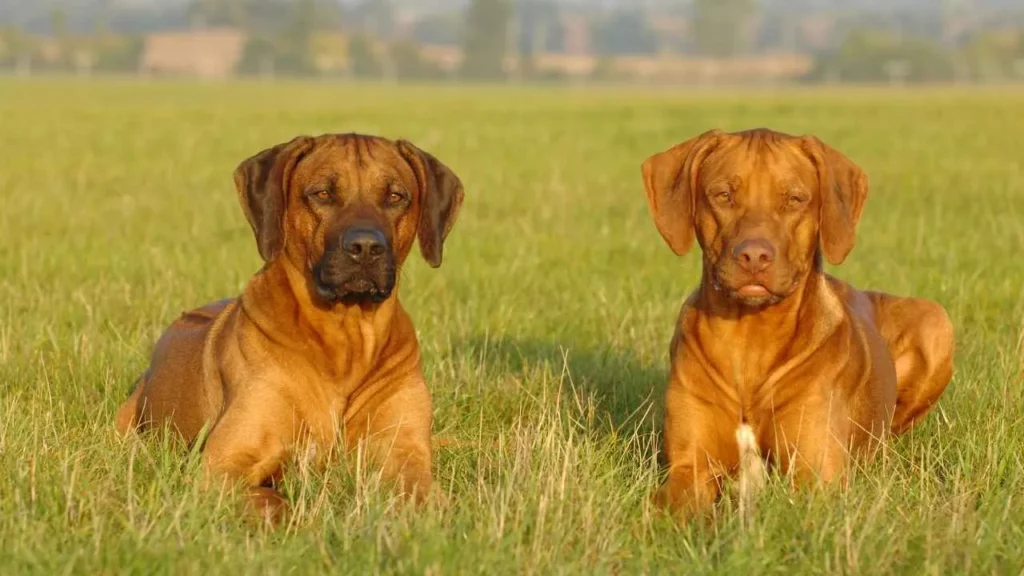
Functional force vs brute strength
Akitas rely on crushing power—a trait aligned with their original roles in guarding and large-game restraint. Ridgebacks show more restraint in their bite, using it with purpose and timing. Each breed’s jaw reflects its potential in real-world utility.
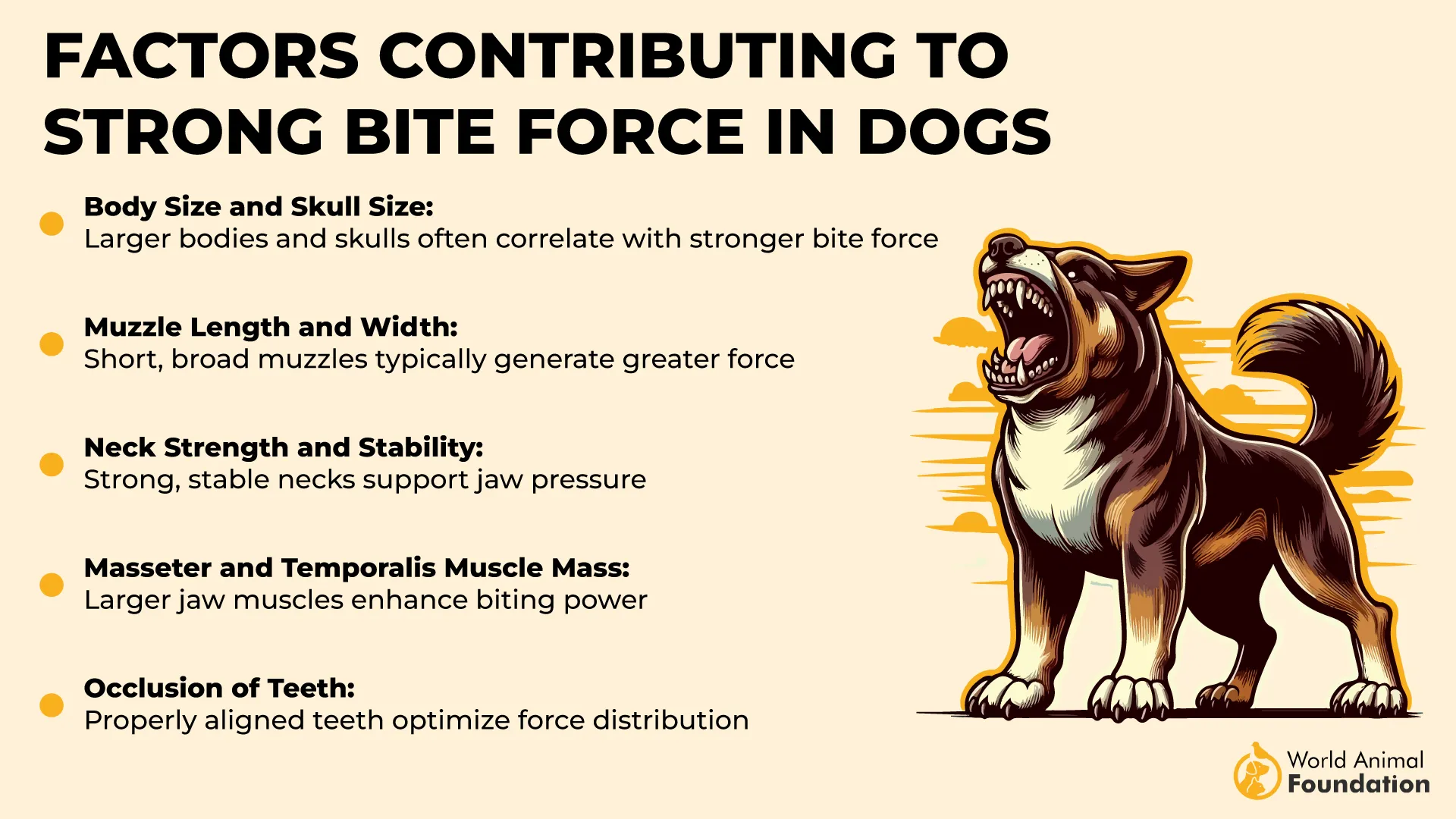
Bite strength matched to temperament
Though both breeds can exert serious bite force, they aren’t indiscriminately reactive. The Akita’s jaw is capable of intense force when provoked, while the Ridgeback uses its mouth more sparingly. Training, environment, and handling all shape their actual behavioral potential.
Health Profile and Lifespan Expectancy
Akita: Strong but prone to specific conditions
Akitas are generally robust but have a predisposition to autoimmune disorders like VKH and hypothyroidism. They’re also at risk for progressive retinal atrophy and hip dysplasia. Responsible breeding and early screening play a key role in prevention.
Lifespan considerations for Akitas
The average lifespan for an Akita is 10 to 13 years, though some may live longer with proper care. Their larger size can contribute to joint stress as they age. Regular weight management and joint support supplements can make a significant difference.
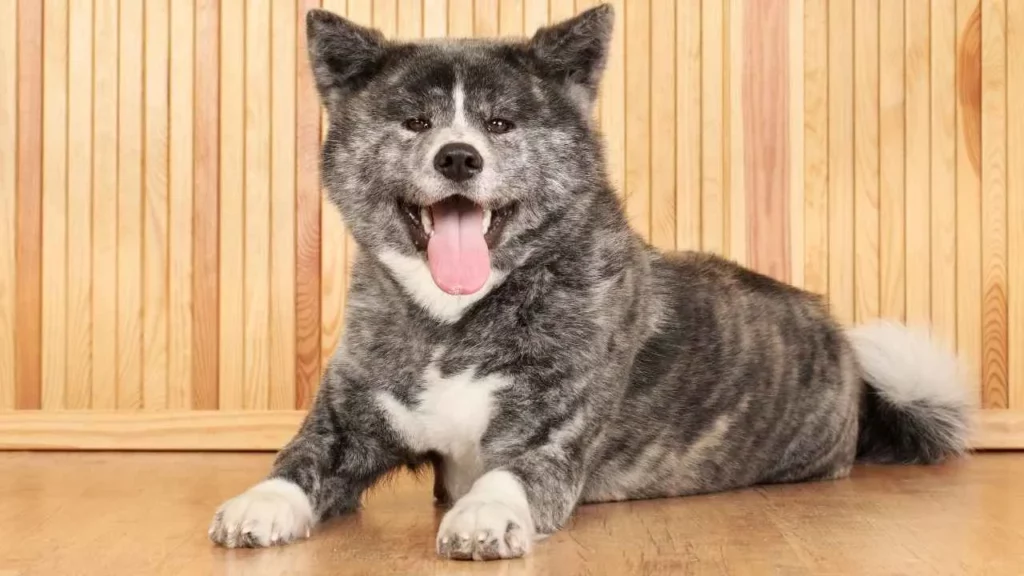
Rhodesian Ridgeback: Fewer hereditary issues
Ridgebacks tend to have a cleaner health slate, though dermoid sinus—a neural tube defect—is a breed-specific concern. Bloat is another risk due to their deep chest. Early detection and preventative gastropexy are often recommended by vets.
Lifespan outlook for Ridgebacks
Rhodesian Ridgebacks typically live 10 to 12 years, with some reaching their mid-teens in low-stress homes. Their athletic build helps them stay active into their senior years. Regular exercise paired with joint-friendly routines supports healthy aging.
Allergies, Grooming, and Maintenance Needs
Akita: Dense double coat with seasonal blowouts
Akitas have a thick double coat that sheds minimally most of the year but blows out heavily twice annually. These shedding cycles can last several weeks and fill your home with fur. Brushing during this period becomes a daily necessity to manage the fallout.
Ridgeback: Short coat with minimal fuss
Rhodesian Ridgebacks have a single-layer coat that’s tight and glossy, requiring very little grooming. They’re low shedders and generally don’t carry a strong doggy odor. A quick weekly brushing is usually enough to keep their coat healthy and clean.
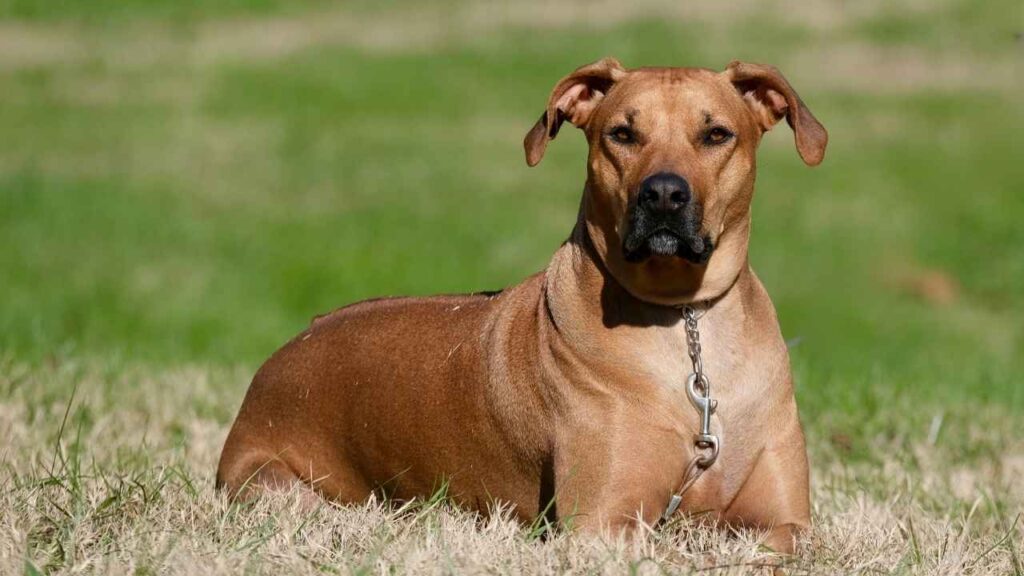
Skin sensitivity and allergy considerations
Akitas are more prone to skin allergies, particularly reactions to food ingredients and environmental triggers like pollen. These can show up as itching, redness, or flaky patches. Ridgebacks tend to have more resilient skin, with fewer allergy-related issues reported.
Bathing needs and coat maintenance
While Ridgebacks rarely need baths unless visibly dirty, Akitas require occasional deep cleaning, especially during heavy shedding. The dense undercoat traps dander and debris, which can build up over time. Nail trims and ear cleaning are essential for both breeds to prevent infections.
Conclusion
Choosing between the Akita and Rhodesian Ridgeback dogs isn’t a simple decision—it’s a reflection of your lifestyle, values, and the energy you want walking beside you.
These aren’t breeds you “own.” They’re companions you continue to grow with every day. Both have earned their recognition through strength, dignity, and a kind of loving loyalty that goes deeper than commands or tricks.
The American Kennel Club may have recognized them for different reasons, but what they represent in a home is equally powerful. Don’t rush. Don’t mistake boldness for aggression or silence for weakness.
Choosing either means stepping into a life of quiet confidence—or fiery independence. Just make sure you’re ready for the fight that matters: becoming the best partner they deserve.


